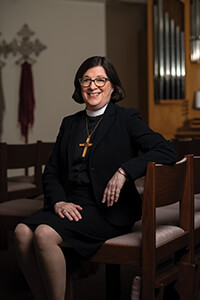Holy Saturday
February 24, 2016
They took the body of Jesus and wrapped it with the spices in linen cloths, according to the burial custom of the Jews. Now there was a garden in the place where he was crucified, and in the garden there was a new tomb in which no one had ever been laid. And so, because it was the Jewish day of Preparation, and the tomb was nearby, they laid Jesus there (John 19:40-42).
Holy Saturday. A pause. A space between Good Friday and Easter. A full tomb and, except for the guard, an empty garden. Still. Silent.
We don’t pay a lot of attention to Holy Saturday other than as our day of preparation for Easter Sunday. The youth group needs to get ready for the Easter breakfast. The altar guild is busy arranging lilies and preparing the altar. Grocery stores are filled. Eggs are dyed. We are occupied with busy anticipation. We have moved on from Good Friday. Even the Easter Vigil on Holy Saturday night looks forward to and heralds the resurrection.
We, of course, live after the first Easter. We do know how the story turns out, and it would be contrived to be in Holy Saturday as if we didn’t know about the resurrection. But we are given this one holy day to pause. We are given this holy space to grieve, to be empty, to realize that life, as we know it, is over.
This is deeply uncomfortable in our culture. We see this on the news when people start to speak about closure immediately after a tragedy. This could be a well-meaning attempt to relieve the pain, but it doesn’t heal. There is danger in moving too quickly from grief. It is important to resist the urge to usher the afflicted to “closure.”
Grief from Sandy Hook, Mother Emmanuel, Katrina, San Bernardino and other tragedies cannot be rushed. None of the Good Fridays in our lives can. The resurrection came after an actual death. The crucifixion was not a metaphor. A heart stopped beating. He breathed his last. A son died. Mothers in Syria and El Salvador and the South Side of Chicago stand at the cross.
But Holy Saturday is more than the necessary and holy space to face death without denial and to grieve without the dulling anesthetic of sentimentality. There is something much deeper going on. It is an invitation to accept that life, as we know it, is over. All of our plans, all of our willfulness and all of our good intentions are over.
On Holy Saturday we are invited to shed our life and enter the tomb. Our effort and righteousness as much as our sin bind us. Our effort to save our lives binds us. This is true as much for the church as it is for each member.
I’m grateful for the faithful innovation and hard work of our people and congregations. I’m not so far removed from parish ministry that I don’t remember its struggles as well as its joys. There is something noble and dear about saints who come week after week, year after year to hear and receive the gospel and, as a response to grace, participate in God’s reconciling work in the world. But there comes a time to take to heart Jesus’ teaching: “For those who want to save their life will lose it, and those who lose their life for my sake will find it” (Matthew 16:25).
The day between Good Friday and Easter can be seen as empty, a void, something to be resisted at all costs, something to be filled. It is the same reaction that many in our culture have to silence. It’s as if sound and activity prove that we still exist. But I think the space between crucifixion and resurrection — truly terrifying and truly compassionate — beckons us from our life to life in Christ. After all, it wasn’t all the noise and fireworks that got Elijah’s attention, but the sound of sheer silence (1 Kings 19:11-13).
When we shed our lives and enter the tomb, when silence is all around, then we see that Jesus is already there ahead of us, anticipating us, welcoming us to be still and to die in him and find our life in him. Rest, dear church.

